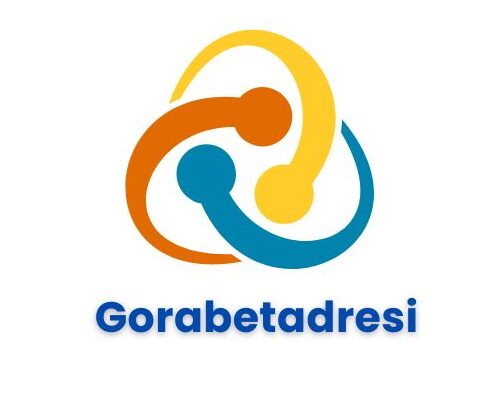In today’s data-driven world, businesses and individuals alike rely heavily on digital information. Data loss can be catastrophic, leading to financial losses, operational disruptions, and reputational damage. Traditional backup solutions often restore entire systems, which can be time-consuming and inefficient. This is where Granular Recovery Technology (GRT) comes into play.
Granular Recovery Technology enables users to recover individual files, emails, database entries, or application components without restoring an entire backup. This precision reduces downtime, improves efficiency, and ensures business continuity.
In this comprehensive guide, we’ll explore:
-
What Granular Recovery Technology is
-
How it works
-
Key benefits
-
Use cases
-
Best practices for implementation
-
Future trends
By the end, you’ll understand why GRT is a game-changer in data recovery.
What is Granular Recovery Technology?
Granular Recovery Technology (GRT) is an advanced data restoration method that allows users to recover specific components from a backup rather than performing a full system restore. Unlike traditional backup solutions that recover entire datasets, GRT enables selective retrieval of:
-
Individual files and folders
-
Single emails or attachments
-
Specific database records
-
Application objects (e.g., SharePoint items, VM files)
This technology is particularly useful in environments where large datasets are involved, and retrieving a single corrupted file quickly is critical.
How Does Granular Recovery Technology Work?
GRT leverages indexing and metadata to locate and extract specific data from a backup. Here’s a step-by-step breakdown of how it works:
1. Data Indexing
-
Before recovery, the backup system scans and indexes stored data.
-
Metadata (such as file names, timestamps, and application-specific attributes) is cataloged for quick retrieval.
2. Point-in-Time Snapshots
-
GRT-enabled backups often use incremental or differential snapshots.
-
Users can select a specific backup point to restore from.
3. Selective Extraction
-
Instead of recovering an entire backup, users can search for and restore only the needed files.
-
Advanced GRT solutions allow deep scanning within applications (e.g., Exchange mailboxes).
4. Application Integration
-
GRT works seamlessly with applications like Microsoft Exchange, SQL Server, and SharePoint.
-
It understands application structures, enabling recovery of individual emails, database rows, or documents.
Key Benefits of Granular Recovery Technology
1. Faster Recovery Times
-
Restoring a single file is much quicker than recovering an entire backup.
-
Minimizes downtime, ensuring business operations continue smoothly.
2. Reduced Storage Overhead
-
Since GRT avoids full restores, it reduces the need for temporary storage.
-
Optimizes backup storage by eliminating unnecessary data duplication.
3. Enhanced Productivity
-
IT teams can resolve data loss incidents faster.
-
End-users regain access to critical files without long wait times.
4. Improved Compliance & Legal Readiness
-
Helps meet regulatory requirements (e.g., GDPR, HIPAA) by enabling precise data retrieval.
-
Simplifies eDiscovery processes by allowing targeted data extraction.
5. Cost Efficiency
-
Reduces the need for extensive recovery infrastructure.
-
Lowers operational costs associated with prolonged downtime.
Use Cases of Granular Recovery Technology
1. Email Recovery in Microsoft Exchange
-
A single deleted email can be restored without recovering the entire mailbox.
-
Critical for legal and compliance scenarios.
2. Database Record Restoration
-
SQL or Oracle databases can recover specific records instead of full tables.
-
Prevents disruptions in transactional systems.
3. Virtual Machine (VM) File Recovery
-
Retrieve individual files from VM backups without restoring the entire virtual machine.
-
Useful in cloud and hybrid environments.
4. SharePoint & OneDrive Document Retrieval
-
Recover specific documents or versions without affecting other users.
-
Ensures collaboration continuity.
5. Ransomware & Cyberattack Recovery
-
Quickly restore encrypted or corrupted files after an attack.
-
Minimizes data loss impact.
Best Practices for Implementing GRT
To maximize the benefits of Granular Recovery Technology, follow these best practices:
1. Choose the Right Backup Solution
-
Ensure your backup software supports GRT for critical applications.
-
Look for solutions with deep application integration (Exchange, SQL, SharePoint).
2. Regularly Test Recovery Processes
-
Conduct periodic recovery drills to verify GRT functionality.
-
Ensure backups are not corrupted and can be restored when needed.
3. Optimize Indexing & Search Capabilities
-
Maintain an efficient indexing system for quick data retrieval.
-
Use metadata tagging for better searchability.
4. Implement Role-Based Access Controls
-
Restrict recovery permissions to authorized personnel.
-
Prevent unauthorized data access or accidental deletions.
5. Monitor Backup Health
-
Regularly check backup integrity to avoid failed recoveries.
-
Use automated alerts for backup failures.
Future Trends in Granular Recovery Technology
As data environments evolve, GRT is expected to advance in the following ways:
1. AI-Powered Recovery
-
Machine learning will enhance search accuracy and predictive recovery.
-
AI could automatically detect and restore corrupted files.
2. Cloud-Native GRT Solutions
-
More backup providers will offer GRT for SaaS applications (e.g., Microsoft 365, Google Workspace).
-
Cloud-based indexing will improve scalability.
3. Blockchain for Backup Integrity
-
Blockchain may be used to verify backup authenticity and prevent tampering.
4. Edge Computing Integration
-
GRT will extend to edge devices, enabling faster localized recoveries.
Conclusion
Granular Recovery Technology revolutionizes data restoration by enabling precise, efficient recoveries. Whether it’s a single email, a database record, or a critical document, GRT ensures minimal downtime and maximum productivity.
By implementing GRT-enabled backup solutions and following best practices, organizations can enhance their disaster recovery strategies, reduce costs, and maintain compliance. As technology advances, GRT will continue to play a pivotal role in safeguarding digital assets.











